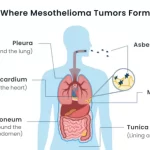
Impact of human genome project
October 9, 2006
Project goals
# Identify all the approximately 20,000-25,000 genes in human DNA,
# Determine the sequences of the 3 billion chemical base pairs that make up human DNA,
# Store this information in databases,
# Improve tools for data analysis,
# Transfer related technologies to the private sector, and
# Address the ethical, legal, and social issues (ELSI) that may arise from the project.
Facts after sequencing human genome
The present (assembly number 35, May 2004) human DNA sequence contains ~3,100,000,000 bp (depending on the actual source of the assembled DNA sequence) that covers most of the nonheterochromatic portions of the genome and contains some 250 gaps
we have ~20,000-25,000 genes (International Human Genome Sequencing Consortium 2004Go), somewhat fewer than estimates based on the preliminary reports of the human sequence (International Human Genome Sequencing Consortium 2001; Venter et al. 2001).
The sequence revealed the full extent to which human DNA is comprised of abundant interspersed repeats, extending and completing what was already known; fully 45% of our DNA consists of repetitive elements interspersed within nonrepetitive sequences. Interestingly, the extent and diversity of gene repetitions contained in low copy number repeats were greater than expected; very extensive duplications of regions of DNA both within and between chromosomes were identified by the International Human Genome Sequencing Consortium (2001) and Venter et al. (2001).
Challenges to bioinformatics research
The first challenge to bioinformatics research relates to the analysis of data posted on the Web in advance of publication without violating ethical standards
The second challenge to bioinformatics research derives not from restrictions on data access but from restrictions on downstream use, such as incorporation into new or existing databases.
Download free Pdf booklet – Bioinformatics and the Human genome Project
The Human genome : Future research
Genomics to biology
#Comprehensively identify the structural and functional components encoded in the human genome
#Elucidate the organization of genetic networks and protein pathways and establish how they contribute to cellular and organismal phenotypes
#Develop a detailed understanding of the heritable variation in the human genome
#Understand evolutionary variation across species and the mechanisms underlying it
#Develop policy options that facilitate the widespread use of genome information in both research and clinical settings
Genomics to health
#Translating genome-based knowledge into health benefits
#Develop robust strategies for identifying the genetic contributions to disease and drug response
#Develop strategies to identify gene variants that contribute to good health and resistance to disease
#Develop genome-based approaches to prediction of disease susceptibility and drug response, early detection of illness, and molecular taxonomy of disease states
#Use new understanding of genes and pathways to develop powerful new therapeutic approaches to disease
#Investigate how genetic risk information is conveyed in clinical settings, how that information influences health strategies and behaviours, and how these affect health outcomes and costs
#Develop genome-based tools that improve the health of all
Genomics to society
#Promoting the use of genomics to maximize benefits and minimize harms
#Develop policy options for the uses of genomics in medical and non-medical settings
#Understand the relationships between genomics, race and ethnicity, and the consequences of uncovering these relationships
#Understand the consequences of uncovering the genomic contributions to human traits and behaviours
Assess how to define the ethical boundaries for uses of genomics
What next?
HapMap Project
The International HapMap Project is a multi-country effort to identify and catalog genetic similarities and differences in human beings. Using the information in the HapMap, researchers will be able to find genes that affect health, disease, and individual responses to medications and environmental factors.
compare the genetic sequences of different individuals to identify chromosomal regions where genetic variants are shared.
By making this information freely available, the Project will help biomedical researchers find genes involved in disease and responses to therapeutic drugs.
ENCODE, the Encyclopedia Of DNA Elements, in September 2003, to carry out a project to identify all functional elements in the human genome sequence. The project is being conducted in three phases: a pilot project phase, a technology development phase and a planned production phase.
Archon X PRIZE for Genomics – Create technology that can successfully map 100 human genomes in 10 days and win $10 million.
On October 4, 2006, the X PRIZE Foundation announced the launch of its second prize — the Archon X PRIZE for Genomics. The $10 million cash prize has been created to revolutionize the medical world.The Archon X PRIZE for Genomics challenges scientists and engineers to create better, cheaper and faster ways to sequence genomes. The knowledge gained by compiling and comparing a library of human genomes will create a new era of preventive and personalized medicine — and transform medical care from reactive to proactive.
The Competition Guidelines
The purpose of this X PRIZE competition is to develop radically new technology that will dramatically reduce the time and cost of sequencing genomes, and accelerate a new era of predictive and personalized medicine. The X PRIZE Foundation aims to enable the development of low-cost diagnostic sequencing of human genomes.
The preliminary guidelines for the competition have been written with this intent and will be further developed and interpreted by the X PRIZE Foundation towards this end.
The $10 million X PRIZE for Genomics prize purse will be awarded to the first Team that can build a device and use it to sequence 100 human genomes within 10 days or less, with an accuracy of no more than one error in every 10,000 bases sequenced, with sequences accurately covering at least 98% of the genome, and at a recurring cost of no more than $10,000 per genome.
If more than one Team attempts the competition at the same time, and more than one Team fulfills all the criteria, then Teams will be ranked according to the time of completion. No more than three teams will be ranked and will share the purse in the following manner: $7.5 million to the winner and $2.5 million to the second place team if two teams are successful, or $7 million, $2 million and $1 million if three teams are successful.
Actual competition events will take place twice a year with all eligible teams given the opportunity to make an attempt, starting at precisely the same time as the other teams.
For more information, please see: http://genomics.xprize.org/axp/
- A Vision for the Future of Genomics Research Francis S. Collins, Eric D. Green, Alan E. Guttmacher, Mark S. Guyer A blueprint for the genomic era. Nature Apr 24 2003: 835
- Bioinformatics–Trying to swim in a sea of data David S. Roos
- Computational comparison of two draft sequences of the human genome John Aach, et al.
- The Human Genome Project: Lessons from Large-Scale Biology Francis S. Collins, Michael Morgan, Aristides Patrinos Science Apr 11 2003: 286
- http://www.xprize.org/xprizes/















